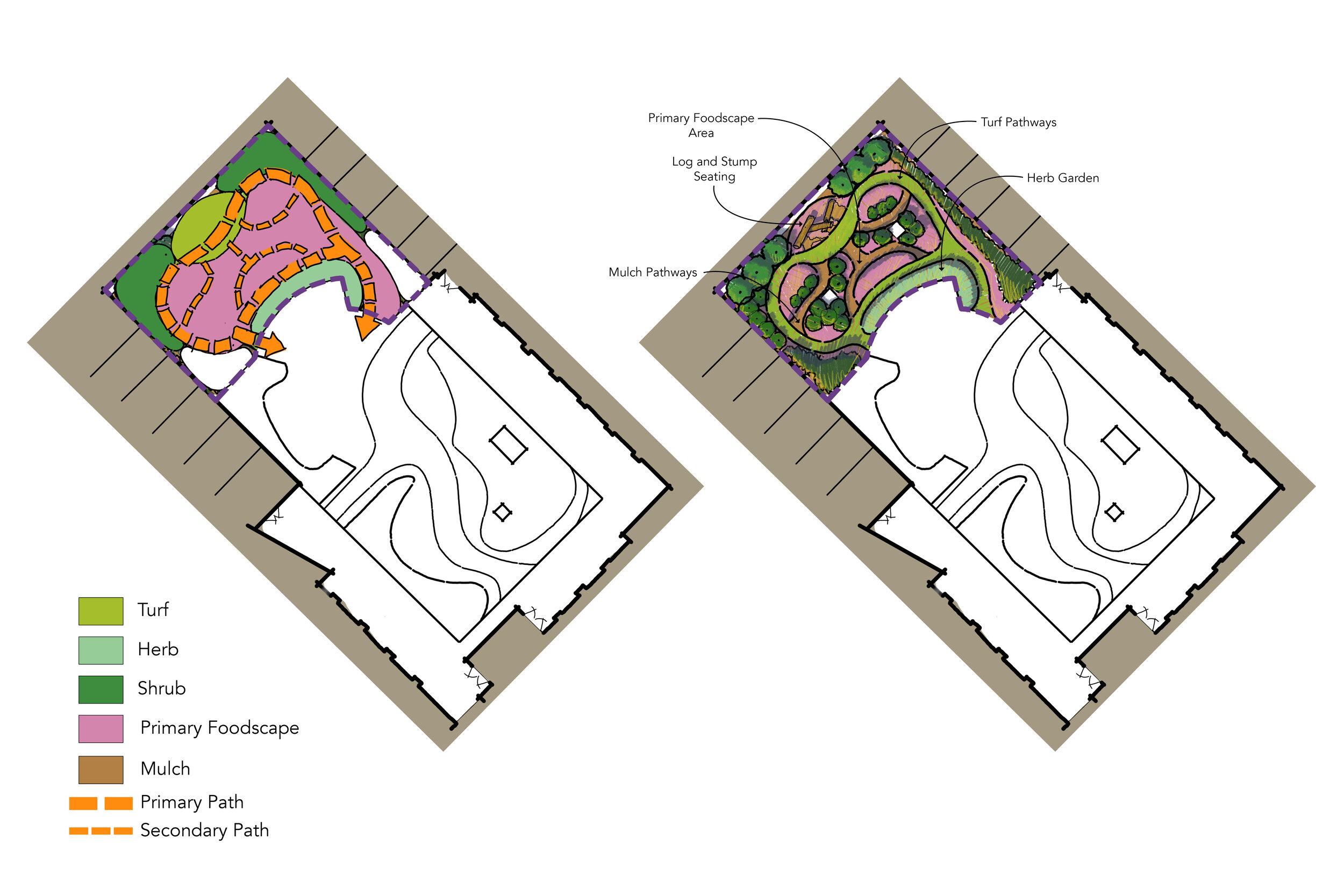Carlyle Court
Pushing the browsing experience for students beyond the novel means first ensuring that the edible plants chosen are familiar enough to be trusted to consume and thrive in the environment they are planted. First, an environmental analysis was performed to understand which edible plants might thrive. The analysis reveals that much of the courtyard is deeply shaded for much of the year, and that the position of the proposed edible landscape within the courtyard means it would receive very little water from rainfall. Furthermore, what stormwater or irrigation that remained on site had the potential to produce high humidity, meaning that fruits or vegetables that require a season or two to develop would be at high risk of developing diseases.
After developing a program of edible plants that would provide forage in multiple seasons, adapt to highly variable light conditions, be resistant to disease, and be familiar enough to the general public to encourage consumption, circulation and small congregation spaces were designed to also encourage the public to explore the interior of the space. Development of this edible pocket park has been delayed due to shifts in housing practices brought about by the COVID-19 pandemic. However, NYU has demonstrated that the organization has a sustained interest in improving the health, environmental awareness, and overall experience of its students through access to edible, medicinal, and wildlife-friendly plants in throughout its outdoor spaces in Manhattan.
Carlyle Court, located near Union Square in Manhattan, serves a robust population of students attending New York University. The courtyard offers students a quiet and protected park experience in sharp contrast to the city bustle just outside its doors. Within Carlyle Court, students are able to gather in small groups for study and dining, or lazily sprawl out on the lawn and enjoy the pleasant rhythms of nature. During 2018, NYU began exploring improvements to the courtyard that would diversify activities available to students. Working with the university’s Grounds and Waste Management team, plans were developed to transform the lawn area into a landscape rich with food browsing opportunities. Growing food in Carlyle Court is very challenging due to challenges with access to sunlight, influences of albedo from surrounding buildings, often stagnant airflow and the buildup of humidity that can foster pathogens, as well as the very real concern that producing food in this context is so novel that students would have to be doubly-reassured that crops were safe to consume.







